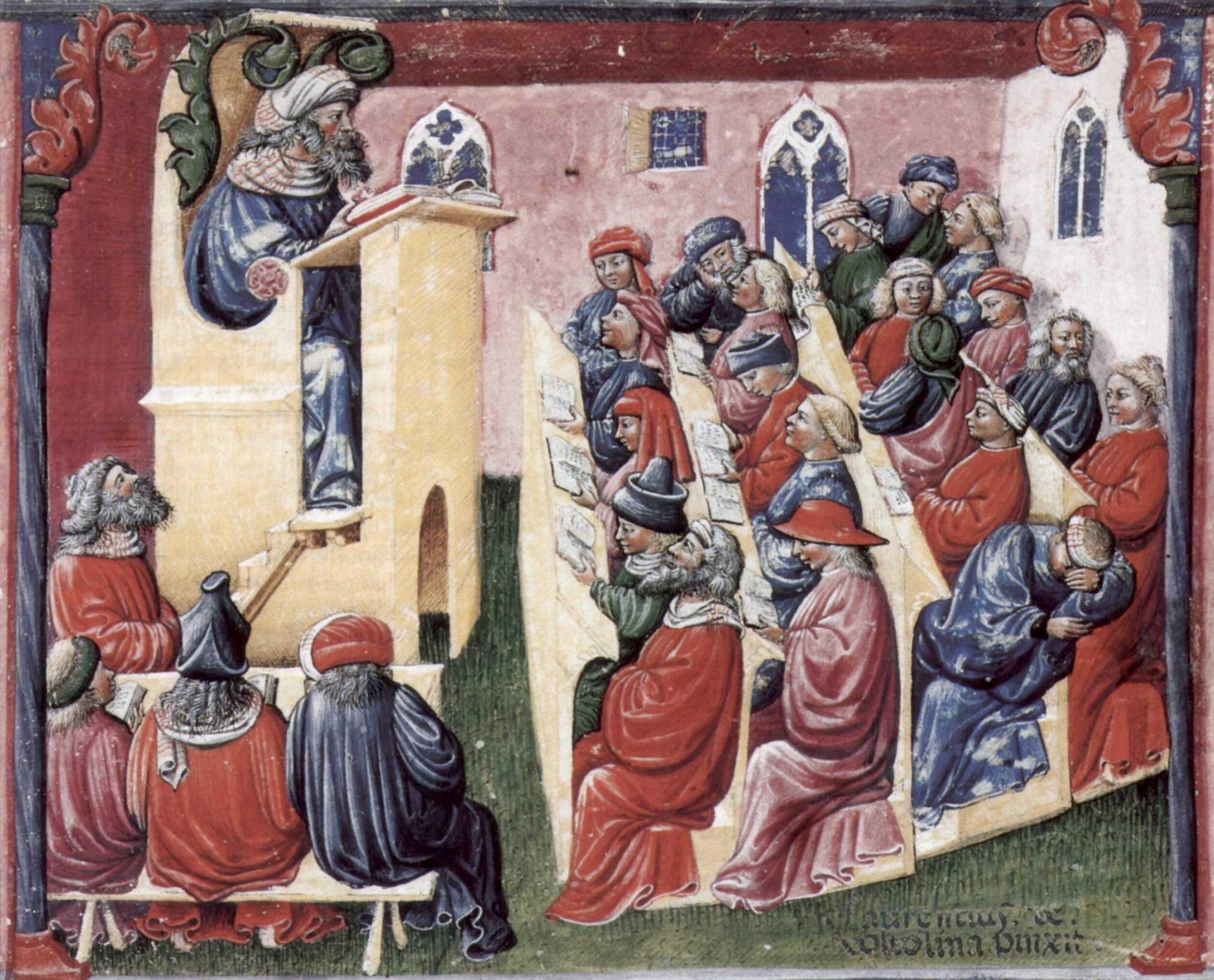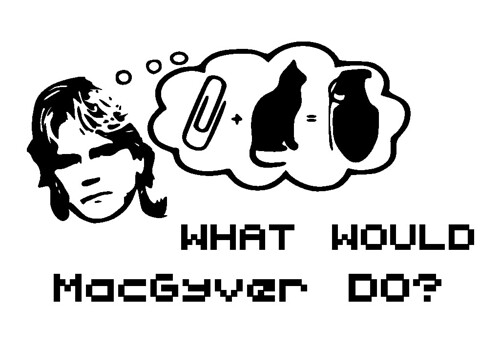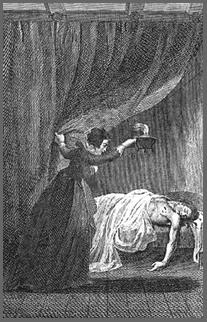My department has been interviewing for new academic posts this week - and as I contemplated the mountain of incoming job applications, the vast majority of them inevitably doomed to failure, I found myself thinking about D&D wizards. Becoming a D&D magic-user clearly requires a specialised education, and yet many of these highly-educated wizards end up as expendable dungeon-crawling adventurers. This suggests to me that D&D wizarding, like modern academia, is probably a profession in which supply and demand are badly out of balance, with many aspiring magi competing over every institutional post.
In situations like these, gatekeepers proliferate like weeds. There are lots of qualified applicants for every position, so having long lists of arbitrary hoops to jump through helps to winnow them down to a manageable level. (If half of them don't even know about the hoops, so much the better!) A lucky few will master all the formal and informal rules of the profession well enough to get one of the coveted seats around the high table at Wizard College. The rest have to settle for a life spent casting Magic Missile spells on goblins, instead.
So where did it all go wrong for your magic-user? Why are they shivering in a dungeon instead of dozing in a nice warm corner of the Senior Common Room? Why are they plotting how to sneak past a troll, when the only plotting they wanted to do was about how to get a seat on the college wine committee? Roll 1d100 to find out!
- Your deep and subtle knowledge turned out to be no match for your terrible exam technique.
- Disastrous relationship breakdown just before finals scuppered your chances of a top grade. At the time you thought love was more important. You were wrong.
- You coasted through your education, getting by on natural talent, until you finally hit a subject you couldn't master at first glance and discovered you had never acquired any actual study skills.
- You joined a drinking society in your first week at college. You finally sobered up shortly after graduation, which in retrospect was probably a bit late.
- You proudly declared your support for one faction in an ongoing intellectual controversy, only to discover that the people assessing your work all adhered to the other side.
- You were too busy doing part-time work to pay your extortionate college fees to actually do any studying.
- You foolishly prioritised mastering your subject over making the right connections while at college.
- Hosting ever-more-legendary college parties seemed like a great idea until you got expelled for setting fire to the accommodation block.
- A senior academic took against you and failed all your assignments out of spite.
- Impenetrable university bureaucracy meant that a minor clerical error on your part somehow led to you failing on a technicality.
- You unwisely took the advice of your tutors at face value and studied the subjects that you, personally, found most intellectually stimulating, not realising that you were rendering yourself unemployable until it was too late.
- You got really into student politics, and were too busy organising protests and having intense conversations with sexy young radicals to do any actual studying.
- You became fascinated by avant-garde theory, and denounced your tutors as a bunch of obscuratist authoritarians too old and scared to recognise the true brilliance of your ideas, which in retrospect may not have been the best way to open the first paragraph of your dissertation.
- Discovered too late that you'd enrolled in a low-status college whose degrees no-one really took seriously.
- The one topic you'd revised for most carefully didn't come up in the paper.
- You suffered a massive panic attack in mid-exam, destroying your prospects in a single horrible hour.
- You devoted yourself to the fearless and objective pursuit of truth and enlightenment, regardless of where it might lead you. Turns out it led you to some very, very low grades.
- The exciting new theory on which you wrote your thesis was discredited shortly after you submitted it.
- You staked everything on making a big breakthrough, but someone else got there first.
- Your academic supervisor was exposed as a fraud and you were tainted by association.
- Your tutor stole all your ideas and took all the credit.
- You unintentionally offended your tutors by turning down too many social invitations, and discovered too late that none of them would write you references.
- Your hazy grasp of academic referencing conventions led to your whole dissertation being failed for plagiarism.
- Your breezy, irreverent, informal presentation style made you stand out in all the wrong ways.
- You were written off as a hopeless case when you forgot to wear full academic dress to your first formal dinner.
- You didn't find the real library until it was much too late.
- You made the wrong friends at college, and subsequently discovered that all your applications for funding kept being mysteriously rejected.
- It turned out that scholarship you were counting on was not, in fact, a sure thing.
- How were you supposed to know that was a secret society handshake?
- Invited to dinner with the professors, ordered the wrong wine, career dead in five minutes flat.
- Fell asleep and started snoring loudly in the middle of a very boring lecture by a very famous visiting academic.
- Sent to a conference as a representative of your college, completely fucked up your paper, tutors loathed you for making them look bad and failed you in revenge.
- Tutored by an affable drunk who gave you brilliant grades for everything. You believed you were a genius until you met the real competition.
- Just because the invitation to meet the Master says it's optional doesn't mean it's actually optional, idiot!
- Went to the wrong lectures.
- Used the wrong archives.
- Cited the wrong sources.
- Spoke at the wrong conferences.
- Competed for the wrong prizes.
- Sent manuscripts to the wrong publishers.
- Collaborated with the wrong academics.
- Applied for the wrong kinds of funding.
- Held visiting fellowships at the wrong colleges.
- Chose the wrong referees.
- Wore the wrong shoes to interview.
- Used the wrong honorifics when greeting the Master.
- Said what you really thought about the Master's taste in painting while he still wasn't quite out of earshot.
- Came from the wrong town.
- Went to the wrong school.
- Spoke with the wrong accent.
- Worshipped at the wrong church.
- Patronised the wrong tailor.
- Had the wrong opinion about that new play everyone was talking about.
- Spent too much time working.
- Spent too little time working.
- Didn't get the right permissions.
- Mentioned the wrong people in your acknowledgements.
- Took the same drugs as everyone else, but made the major faux pas of admitting that you took them.
- Walked on the grass without permission.
- Fought back when viciously attacked by the college cat.
- Passed the port right at High Table.
- Dared to complain about the food.
- Using long strings of on-trend content-free buzzwords may have sufficed to get you shortlisted, but oh God it did not play well at interview.
- Did so well as a poorly-paid teaching assistant with no job security that the faculty decided to just carry on exploiting you forever.
- Couldn't compete with the research resources available to much better-funded rivals.
- Staked everything on a brilliant job opportunity without realising it was only ever meant to go to the inside candidate.
- Loyally followed your boyfriend/girlfriend to a new city, without realising that everyone at college would forget all about you the instant you left town.
- Turned down a safe job to follow up a tip about a more prestigious post elsewhere. You didn't realise that you'd only been invited to make up the numbers until you saw the rest of the shortlist, and by then it was too late.
- Just because they say they want your 'honest feedback' doesn't mean you should actually tell them the truth!
- All those 'unmissable research opportunities' turned out to be unpaid, and you eventually ran out of family money.
- Used as an expendable catspaw in some kind of esoteric power struggle between two senior academics.
- Took a few years out and found that the field had moved on without you.
- Framed for academic misconduct by an ambitious rival who wanted to remove you from the competition.
- The professor you gave up your old post to work with was undoubtedly brilliant twenty years ago, but these days he's just senile.
- Applying for high-status posts made you look over-ambitious.
- Applying for low-status posts made you look desperate.
- Application letter was much too long and nobody read it.
- Your interviewer was your grandfather's college rival fifty years ago and still takes the feud extremely seriously.
- Your work was too traditional and it made you look boring.
- Your work was too non-traditional and it made you look unsafe.
- Panicked in the interview and just started babbling.
- Couldn't think of anything clever to say when the interviewer asked: 'And now, do you have any questions for us?'
- I think you'll find that that term is now considered highly offensive.
- No, of course we don't mean anything by it when we say it. Don't you have a sense of humour?
- Insufficiently active in defending the college during the latest town vs. gown riots.
- Failure to attend sporting fixtures shows unpardonable lack of college spirit.
- Insufficiently aggressive salary negotiations meant that your 'dream job' left you a pauper.
- 'Yes, I can see that your work is terribly clever. But has it had any public impact?'
- 'Is it relevant to current government priorities?'
- 'Does it have any commercial applications?'
- 'How does it fit into our college strategy?'
- Oh God you should have researched this place more thoroughly before you said that in your interview.
- How were you supposed to know they hated each other?
- Citing too little existing scholarship made you look ignorant.
- Citing too much existing scholarship made you look derivative.
- Your first book received a devastating review in the field's leading journal and your career never recovered.
- It took you years to work out that the reader was rejecting all your articles because he wanted you to send them to his journal, instead!
- Failed to keep pace with changing intellectual fashions.
- You were stupid enough to believe them when they said that the dinner wasn't part of the interview.
- Learned too late that the college tiddlywinks society was the real key to success all along.

















